Big Game archery seasons open up in Montana in less than a month. Surprised? Antelope season is open August 15th along with a few primitive weapons areas that includes archery equipment for deer and elk. Now is the time to get your archery hunting equipment ready.
I shot my first whitetail buck with a bow in 1991 with just about zero knowledge about bows, arrows and broad heads. I bought a cheap pack of broad heads that weighed the same as my field points and went hunting.
As the years have gone by I’ve found myself in situations while hunting various game animals all over North America where I have both loved and questioned the performance of my broad heads. In all fairness a number of contributing factors can influence arrow penetration on big game. To some extent, factors within our control include things like arrow speed, arrow weight and shot placement.
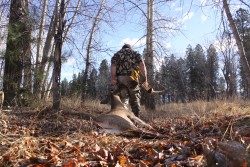
Things out of our control include the animals movement during the milliseconds before arrow impact, the way the broad head ends up hitting bones like ribs and arguably that branch we didn’t see when we released the arrow.
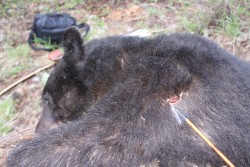
One major factor we can definitely control is the broad heads we choose. What could possibly be more important than a sharp broad head? Well for starters a broad head that won’t crumple upon impact. Perhaps some of our bow hunting readers recall when Schick (R) razor blades were introduced into the bow hunting community. They were certainly sharp but blew apart at the first hair follicle they hit. They were better suited for their original purpose.
Or perhaps you’ve seen bent over tips or aluminum ferrules that folded up like a pocket knife when they hit a rib bone. None of these are good attributes including mechanical broad heads which are marketed well enough to cut the dollars out of bowhunters pockets every year even with piss-poor field results. Yup, I wrote it, mechanical broad heads are garbage.
The problem with criticizing broad heads and using the process of elimination to pick the best one is that there is some guy (or gal) somewhere who jumps up and down citing an experience they had with a poor broad head that was positive. Under ideal circumstances (and with a little luck) ANY sharp broad head can yield a successful harvest. A broad side shot into a buffalo with a mechanical broad head that actually opens properly on impact and doesn’t hit any bone in a way that breaks or deflects it can blow right through and put even America’s largest wild animals down quickly. But the best broad heads perform effectively even when hitting a shoulder blade upon entrance or worse a back bone. Can your broad head break through the spine of an elk without crumpling? 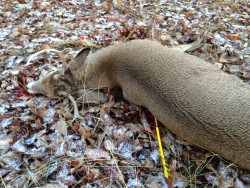
I’m not advocating intentionally shooting any game animal in the shoulder blade or spine but the fact is that when ever we let an arrow fly the potential to miss our mark is present. Likewise I’ve watched too many hunting shows where a hunter shooting an arrow at speeds in excess of 320 Feet-Per-Second (FPS) hits a white tailed deer perfectly behind the front shoulder and the arrow penetration is about 5 inches. At arrow speeds that fast on an animal as small as a white tail that arrow should be stuck in the ground twenty feet behind that deer! There is no excuse! The bowhunting star fist pumps and dances in his tree stand raving about how great the products he’s sponsored by are. Meanwhile I’m watching this thinking “Sorry dude – your sponsors products suck and everyone who just watched that arrow suck on this video knows it”.
So what makes a good broad head? A solid cut-on-impact broad head with dimensions as close to a 3:1 ratio (three times longer than it is wide) will outperform ANY other broad head without those attributes provided that the materials of construction are sound and they are pushed at speeds and arrow weights appropriate for the species.
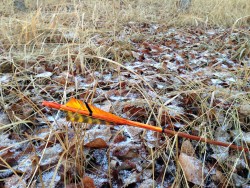
Bowhunters pursuing white tails could shoot arrows in the 600 grain arrow weight range with confidence. Book a trip hunting Cape Buffalo in Africa though – and things change dramatically, requiring arrow weights in excess of 900 grains. Why? Because heavy arrows penetrate better; that’s why. But you’ll still need a sharp broad head that won’t crumple when it meets a buffalo rib. And while we’re on the subject of arrow penetration – wild turkeys can be one of the most difficult species to penetrate and all these criteria apply for those too.
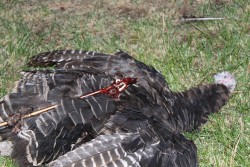
Use the same set up for all the game you pursue from turkeys to Buffalo and remember that no animal has ever been lost due to too much penetration.
Things to look for when choosing the right broad head this season:
1) Solid construction
2) 3: 1 ratio design
3) Cut On Impact (the first part of the broad head that connects with the animal should be razor sharp)
4) No mechanicals (I don’t care how cute that model is who’s selling the broad head – save your money and heart ache)
5) You don’t necessarily get what you pay for in this case – stick to the basics and spend your money on broad heads that will function perfectly every time – like a solidly built razor sharp broad head that doesn’t have moving parts that fail.